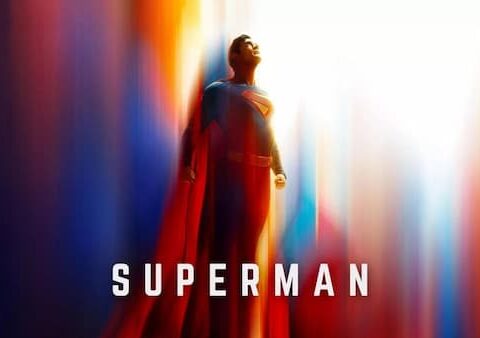X-Men Prime isn’t the best book.
The problem with X-Men Prime is that it doesn’t feel like organic storytelling, but more like precisely what it is: a book that reorganises the X-world and acts as stage-setting.
As such, it feels like more like an illustrated book of exposition than anything else; and therefore isn’t the most enjoyable reading experience.
This is perhaps also a result of having multiple writers; while having multiple artists also creates a slightly unconvincing visual dynamic across the book.
That being said, it does what it sets out to do – introduces us to the new paradigms, while sending the various characters off in their new directions and setting up the new X-titles. It just doesn’t do it particularly well – and it feels like you’d get exactly the same result from just reading a Wikipedia page on X-Men Prime rather than bothering to read the comic itself.
Admittedly, I’m in two minds about this entire rebooting or shaking up of the X-Men franchise.
On one level, I feel like the nostalgic return to old-school X-Men style and sensibilities could give us some very good stuff; and it certainly will appeal to a significant portion of the readership demographic.
On the other hand, I tend to get annoyed with all-too-frequent retooling or rebooting that goes on with Marvel, which reeks of creative teams being unable to commit to long-term ideas or dynamics and possibly to their lack of confidence in the general readerships’ attention span.
There have been numerous instances in recent years of titles that I was really getting into and that were finding their stride, only to be unceremoniously discontinued in order for the next reboot or big change-up to occur.
Sometimes, these reboots are so quick that it feels like a game of musical chairs in which nothing is really allowed to settle or find its momentum. An example would be the All-New Inhumans title that I thought was going really well, only to be cancelled after 11 issues in order to do the big IvX thing and then rebrand all of the X-Men and Inhumans titles.
In X terms, another would be the most recent Uncanny X-Men title, which I thought was generally very good, with very strong dynamics and potential (Psylocke, Magneto, Monet, etc), only to be vetoed for the new shake-up.
On the other hand, although the Extraordinary X-Men title wasn’t something I was necessarily enjoying that much, I did think the dynamics were reasonably interesting.
The point, at any rate, is that I rather fondly remember a time when titles would go on for years and be allowed to grow and evolve; but that doesn’t happen anymore – and I’m sure this musical chairs dynamic is helpful. Whether this is a reflection of the creative teams or executives having very small attention-spans or patience or a case of the general readership being perceived to lack patience or attention spans, I am not sure – maybe it’s mixture of both.
That being said, this big X shake up at this time probably does allow for some weak-links to be shaken off (the All-New X-Men title was really stagnating and Extraordinary X-Men had already probably run out of steam) and some rich possibilities to emerge (I’m exciting about the new Jean Grey solo title, while a new Generation X title could be a very good thing).

X-Men Gold #1 inherits, for me anyway, some of the problems from X-Men Prime.
Having Kitty take centre stage in a leadership role is fine, though it seems a little incongruous to have her do so in a team populated entirely be people older and more experienced than her.
There’s just something that doesn’t quite translate right about having Kitty in charge when, for example, Nightcrawler, Storm and Colossus are right there with her. That’s the first problem and it’s kind of a big one. Storm’s reasons for giving up leadership make sense; but, even so, it doesn’t quite feel right and feels more like an executive decision by a comic-book staff to shift the dynamics than it does an organic decision by the character.
Another is that I’m struggling with Rachel’s new look and persona as ‘Prestige’, which feels like a needless, gimmicky rebranding.
Up to this point, Rachel has been one of my favorite X characters – there was nothing wrong with her, no need for a rebranding. On a similar(ish) note, Storm reverting to her classic 70s outfit/look is something that might delight nostalgists or, equally, might annoy modernists who were perfectly happy with the contemporary Storm look.
This arguably highlights a duality that exists in many of us X-fans, in that we’re usually nostalgic for older eras while also being (to varying extents) engaged by the contemporary landscape too – and therefore it’s sometimes difficult to even know for certain what it is that we want.
I’m sometimes guilty of this too.
Example – I like the old, late 80s to early 90s Magneto, and am not so fond of the contemporary Magneto. On the other hand, I really prefer the contemporary Ororo Munroe to the old, ‘classic’ Ororo Munroe, and was rather enjoying the leadership Storm/Ororo of recent years.
These are some of the underlying problems for me with this shaking up of the X-Men dynamics. A few months down the line, it might not matter anymore; but, at this transitional stage, it causes some problems.
All of that being said, the main motivation for X-Men Gold – and indeed for this whole X-Men rebooting – seems to be to play to nostalgia and evoke earlier, ‘classic’ X-Men eras.
On that front, X-Men Gold #1 is quite effective and this does at times feel like reading old-school X-Men (I was particularly reminded of the Claremont ‘Mutant Genesis’ era).
This underlying theme isn’t even subtle, but explained in dialogue, with “the more things change, the more they stay the same” line being spoken first by Colossus and later by Storm.
Storm in fact talks with Kurt about getting back to their roots. The title for this arc is ‘Back to Basics’ and that’s fairly evident in everything else here. It feels like an old-school X-Men story, with old-school team mission against random villain (albeit Terrax, in this instance), brief Danger Room scene, and a new Brotherhood of Evil Mutants cliffhanger.
The problem, going forward, is whether this nostalgic, back-to-basics motif will wear thin very quickly or whether it will grow and develop in interesting, engaging directions.

X-Men Blue #1 fares about the same as Gold #1, feeling largely like a retro book, but also containing just enough sense of the new to it – or at least the novelty value of having the time-displaced original X-Men breaking off on their own and become their own team.
It has a bit more bounce and energy to it and it’s nice to see young Jean Grey taking charge of her team (which feels a little more logical in this book’s terms than it does to have Kitty leading the team in the other book).
Not much seems to happen here either, other than to reestablish the dynamics and interplay between these characters, while an encounter with Black Tom Cassidy and Juggernaut adds another element of retro feel to the affair. The fight with Juggernaut is actually reasonably fun; but essentially there’s nothing of any great note on offer here so far.
The only real surprise we get is the twist of the ending, revealing who it is that the X-kids are actually working for. I admittedly did not see that coming.
In general, X-Men Blue and X-Men Gold #1 are both slightly underwhelming books. The latter fares better than the former; but both leave plenty of scope for development and potentially good things to come.
Still can’t help but feel, however, that whatever goes on with these various new X-books in the next year or so, we’ll simply end up with another inevitable slate-wiping, rebooting of everything not too long from now.




